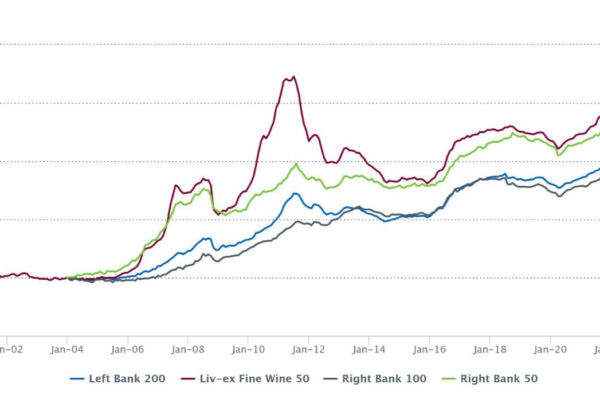Owner: Angelo Gaja
The Liv-ex Classification 2019: Second Tier
Vineyard area: 101 ha
Grape varieties planted: Various (Nebbiolo, Barbera, Cabernet Sauvignon, Merlot, Syrah, Sauvignon Blanc, Chardonnay etc.)
Most traded Gaja wines on Liv-ex: Sperss, Sori San Lorenzo, Sori Tildin, Costa Russi
History
The Gaja story began in 1859, when Giovanni Gaja set up the winery with only two hectares of vineyards in Barbaresco. By the end of the 19th century, Gaja wines were distributed to the Italian army in Abyssinia. Every generation has contributed to the winery’s expansion since, but it was in 1937 that the grandson of the founder, also called Giovanni, put the name Gaja in red letters on his bottles’ labels. 1961 was another notable year – it is when Angelo Gaja, at the mere age of 21, began his career with the company. Angelo took over the family business in 1970 and implemented many of the changes that brought Gaja to worldwide fame.
Breaking convention, Angelo Gaja innovated Piedmontese winemaking by introducing higher density planting, green harvesting, lower yields, the use of barriques (225-liter French oak barrels) and longer corks. His pursuits were often seen as nothing but controversial. Not only did he start releasing single vineyard Barbarescos, contributing to the “cruisation of the Piedmont”, but he also planted Cabernet Sauvignon, Sauvignon Blanc and Chardonnay on prime Barbaresco land. His father, Giovanni, opposed some of his decisions, in particular, the planting of French grape varieties. The name of Gaja’s Cabernet Sauvignon-based red, Darmagi, first released in 1985, means “what a pity” in the Piedmont dialect, and is said to be Giovanni’s reaction to the arrival of Bordeaux varieties in Barbaresco.
Angelo has famously referred to his winemaking approach as essentially “artisanal”. Still, Gaja’s overall production stands close to a million bottles. The pricing of the brand has also been ambitious, which has influenced its performance on the market. In the past, having gained popularity, Gaja’s aggressive pricing pushed buyers back towards regions such as Bordeaux. But the picture is now changing. With the diversification and broadening of the market, and indeed growing interest in Italian wines, Gaja is making a comeback and looks here to stay.
Market Performance
The chart below illustrates this. Italy’s share of the total trade by value has experienced consistent growth, surpassing 8% in 2018. Activity for Gaja has been less steady, peaking in 2014 to account for 12% of the total Italian trade, which then stood at 5%. As Italy gathered momentum in 2015 (to account for 7%), its increased trade by value was led by the more liquid Super Tuscans – Sassicaia, Masseto, Ornellaia – which affected Gaja’s share.
Since 2017, however, Gaja’s share of Italy has been rising at a steady pace, from 4% to 7%. So far this year, its Sori San Lorenzo, Costa Russi, Sori Tildin and Sperss have been very active.
When it comes to Gaja’s price performance, the Gaja Sori San Lorenzo index has risen the most since the end of 2017, up 5.6%. Gaja Barbaresco has also increased by 4.9%, while Sperss has remained flat. The broader Italy 100 index has risen 6.2% over the same period.
The charts below compare the Market Prices of the last ten physical vintages of Sori San Lorenzo and Sori Tildin to their respective Wine Advocate scores. Despite vintage and score variation, the wines command very similar prices, trading within the same range. This indicates that strong brand affinity and the power of Gaja the label as opposed to stylistic preference largely determine value.
For Liv-ex members, there are currently a number of live Gaja offers, including numerous vintages of its Barbaresco, Darmagi, Vistamare, Langhe Alteni Bressica, Sperrs. All are available on the marketplace now. If you are interested in the region, please do take a look at www.liv-ex.com, or email your Account Manager who would be pleased to send you the list in Excel format.
Next month, we are also publishing a special in-depth report on Italy: its past, present and the future. Register your interest in the box below to be the first one to receive a copy.
[et_bloom_locked optin_id=”optin_18″] Thank you for subscribing. A copy of the report will be emailed to you in the coming weeks. [/et_bloom_locked]








